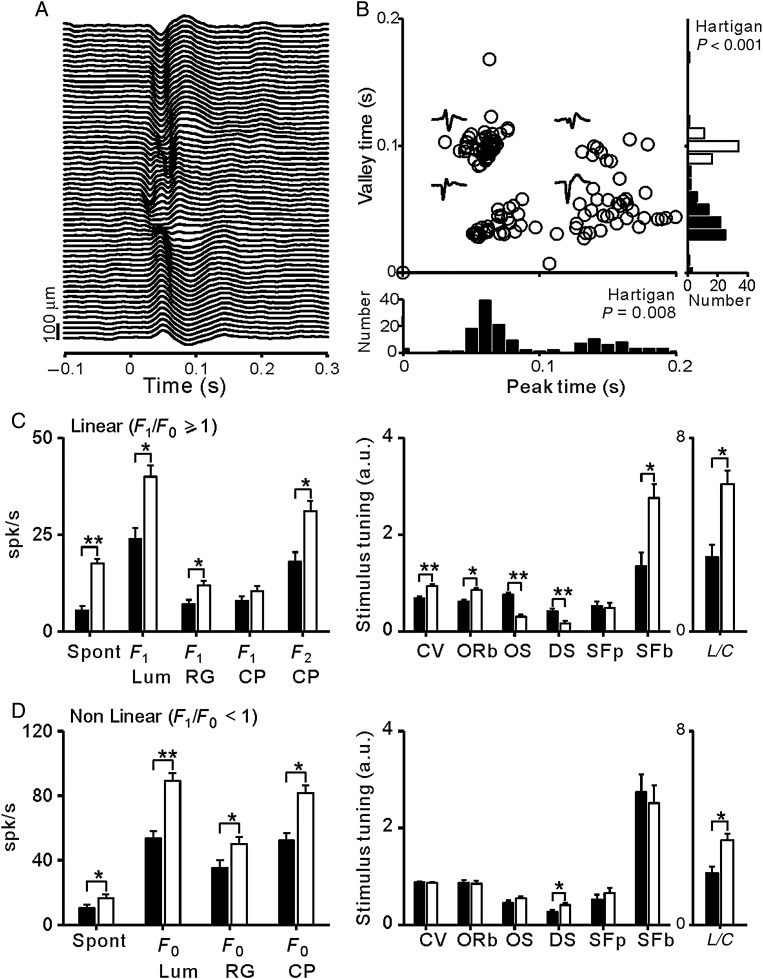Figure 9.
V1 cells associated with positive LFPs in deep cortical layers generate stronger combined responses to color and luminance. The laminar location of the each V1 cell was estimated based on the polarity of the LFP recorded from the same electrode tip. (A) LFPs generated by the onset of a grating stimulus presented at time 0 and measured with a single electrode that was moved through the depth of the cortex. As reported previously, the polarity of the LFP was negative at the superficial layers (top) and positive at the deep layers (bottom). (B) LFPs associated with all recorded V1 cells formed separate clusters when plotted as a function of their LFP peak (positive) and valley (negative) times and their distributions were bimodal (P < 0.001 for valley time and P = 0.008 for peak time, Hartigan test). The outliers in the distribution (e.g., peak time = 0) were flat LFPs usually recorded in the superficial layers of the cortex. (C) Response properties of V1 cells with linear spatial summation (F1/F0 ≥ 1). V1 cells associated with positive LFPs (light bars) generated stronger responses to chromatic and luminance stimuli had larger L/C ratios, broader tuning, and higher spontaneous activity than V1 cells associated with negative LFPs (dark bars). (D) Same as (C) but for nonlinear V1 cells (F1/F0 < 1). Spon: spontaneous activity; F0: mean response to luminance gratings (Lum), red–green equiluminant gratings (RG), and compound gratings (CP); F1: first harmonic of response; F2 CP: second harmonic of response to compound gratings; CV: circular variance; ORb: orientation bandwidth, measured as HWHH; OS: orientation selectivity measured as the response to the preferred orientation divided by the response to the orthogonal orientation; DS: direction selectivity measured as 1 − (response to nonpreferred direction/response to preferred direction); SFp: peak of the spatial frequency tuning; SFb: spatial frequency bandwidth measured as HWHH; L/C: luminance/color ratio calculated from the F2/F1 ratio of the response to compound gratings; a.u.: arbitrary units. *P < 0.05; **P < 0.001.

